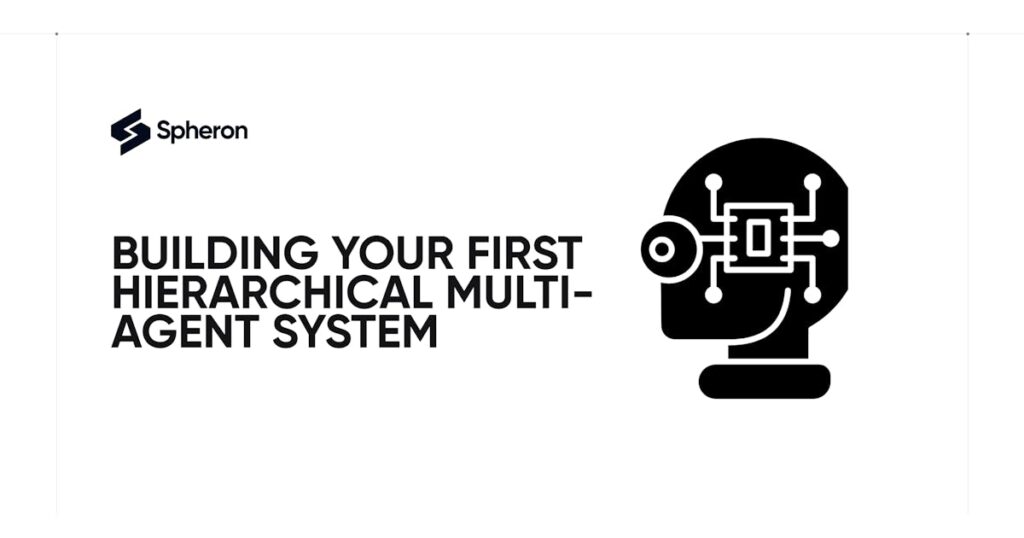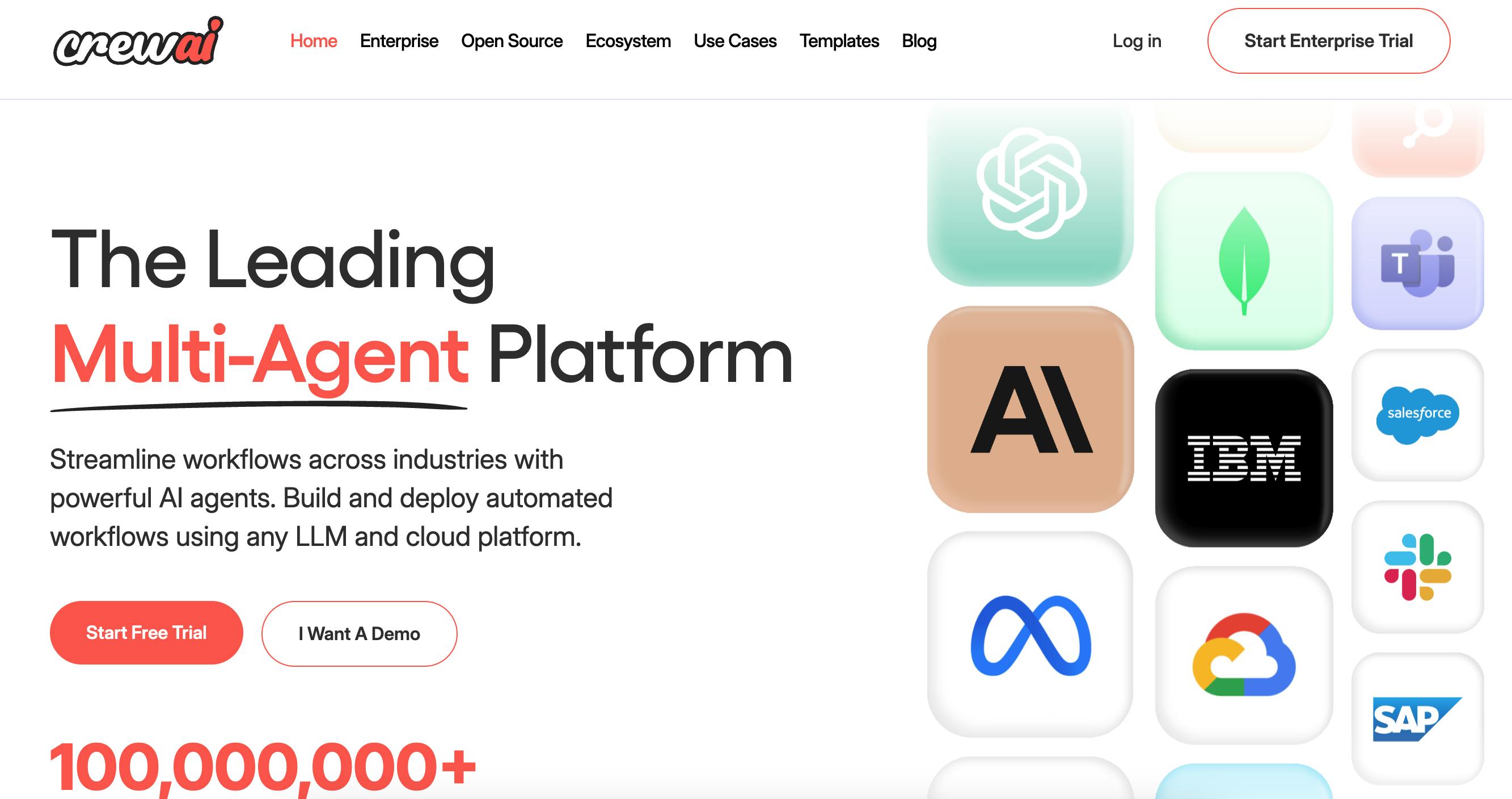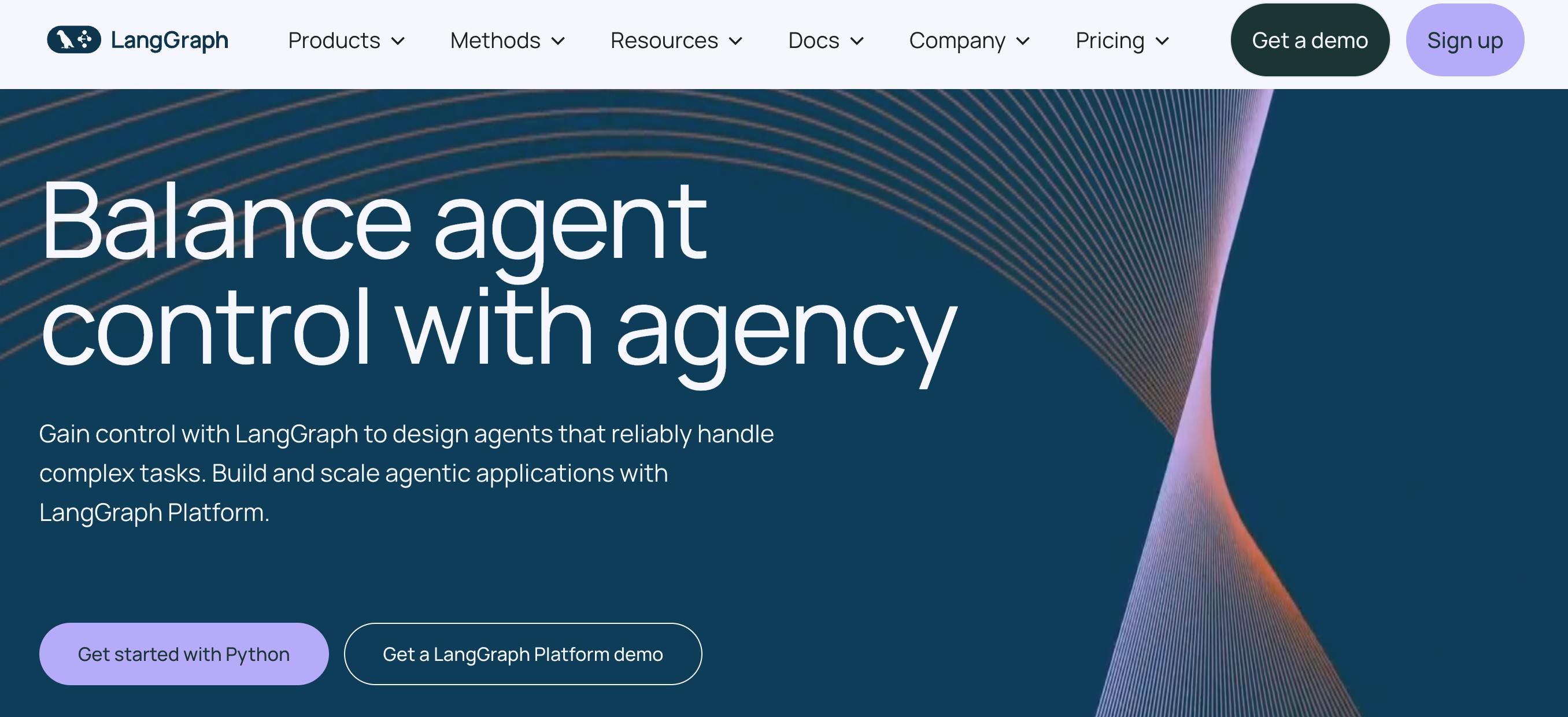Artificial intelligence (AI) has progressed from isolated, single-task agents to more sophisticated systems that can collaborate, strategize, and adapt to dynamic environments. These systems are known as multi-agent systems. While individual agents have their own strengths, they often fall short when faced with tasks that require diverse expertise, decision-making, and memory. This is where hierarchical multi-agent systems come into play.
Hierarchical multi-agent systems are structured environments in which multiple agents work together under a well-defined chain of command, often supervised by a central entity. They divide labor among specialized agents while ensuring that their activities are synchronized to achieve broader objectives. Let’s explore these systems, why they are necessary, the frameworks that support them, and how to create one.
What Is an Agent?
In AI, an agent is an automated decision-making entity that interacts with its environment to achieve specific goals. Think of an agent as a problem-solver: It receives queries, processes them, and autonomously decides what actions to take to deliver meaningful outputs. The agent achieves this by breaking down tasks, using tools, accessing memory systems, and planning workflows.
For example, a simple agent might answer a trivia question by querying a database, while a more complex agent could analyze financial data, evaluate investment opportunities, and generate actionable insights. Agents can also vary in sophistication:
-
Basic agents operate within fixed rules or workflows.
-
Advanced agents integrate tools, memory, and reasoning to adapt to complex, evolving scenarios.
Why Do We Need Multi-Agent Systems?
When tasks become too multifaceted for a single agent, a multi-agent system (MAS) offers a natural solution. Multi-agent systems consist of multiple agents collaborating on a shared objective. Each agent has a specific role, contributing its expertise to the larger workflow.
This structure is vital for several reasons:
-
Complex Problem Solving: Tasks often require diverse skill sets that cannot be provided by a single agent. Multi-agent systems divide responsibilities among specialized agents.
-
Workflow Separation: By segmenting tasks, MAS simplifies debugging and optimization. Each agent focuses on its area of expertise, making it easier to identify and address issues.
-
Improved Scalability: Multi-agent systems allow developers to add or modify agents without overhauling the entire system. This flexibility is crucial for scaling AI solutions to handle larger datasets or more intricate tasks.
For example, in a disaster response scenario, one agent might analyze weather patterns, another might coordinate with rescue teams, and a third could monitor supply inventory. Together, these agents create a comprehensive system for efficient management of the operation.
Challenges in Designing Multi-Agent Systems
Designing a multi-agent system is not without its challenges. Key issues include:
-
Inter-Agent Communication: Ensuring agents can communicate effectively to share information and synchronize efforts.
-
Maintaining Context: Agents must have access to shared memory or knowledge to make informed decisions.
-
Error Handling: A fault in one agent can cascade through the system, potentially disrupting the workflow.
-
Dynamic Decision-Making: Agents must adapt to real-time changes in the environment or user input.
To address these challenges, multi-agent systems often incorporate frameworks that provide built-in mechanisms for coordination, memory sharing, and error mitigation.
Frameworks for Multi-Agent Systems
Several frameworks exist to simplify the creation and management of multi-agent systems. Each offers unique features tailored to different needs.
1. AutoGen
AutoGen, developed by Microsoft, is an open-source framework for creating agents that can collaborate autonomously. It focuses on facilitating seamless communication between agents while supporting tool integration and human-in-the-loop workflows. AutoGen is particularly effective for automating tasks that require agents to interact with tools and databases.
2. Crew AI
Crew AI builds on the concepts of autonomy introduced by AutoGen but emphasizes role-based agent design. In Crew AI, each agent has predefined responsibilities, and the system enables flexible inter-agent delegation. This framework is ideal for scenarios requiring structured interactions, such as project management or customer service workflows.
3. LangGraph
LangGraph takes a unique approach by using graph-based representations for multi-agent workflows. It allows developers to define detailed workflows with cyclical processes, making it suitable for dynamic and iterative decision-making. LangGraph also integrates with LangChain, leveraging its capabilities to expand into more complex applications.
These frameworks provide developers with the tools to create robust and scalable multi-agent systems tailored to their specific requirements.
Types of Multi-Agent Systems
Multi-agent systems are often categorized based on their organizational structure and how agents interact:
Collaboration-Based Systems
In collaboration-based systems, agents work together to achieve a common goal. These agents share context and interact frequently to exchange information and refine strategies. Each agent brings its unique expertise to the table, contributing to the success of the system as a whole. For instance, in a customer service setup, one agent might handle technical queries while another manages account-related concerns.
Agent-Supervisor Systems
In an agent-supervisor setup, a central supervisor oversees subordinate agents, delegating tasks, monitoring progress, and ensuring alignment with the system’s objectives. This structure provides centralized control and is particularly useful for scenarios where strict coordination is required. For example, in a legal research system, the supervisor could assign research tasks to specific agents specializing in different areas of law.
Hierarchical Team Systems
Hierarchical systems are organized into multiple levels, with higher-level agents managing broader objectives and lower-level agents focusing on specific tasks. For example, in a search-and-rescue operation, a top-level agent could coordinate efforts across regions, while mid-level agents manage local operations, and specialized agents handle tasks like navigation or communications.
Building a Hierarchical Multi-Agent System
Let’s explore how to design a hierarchical multi-agent system for a search-and-rescue operation. In this system, the agents will include a Supervisor managing three specialized agents: Pilot, Co-Pilot, and Combat Systems Operator (CSO). Each agent will use external tools and knowledge to execute its tasks efficiently.
Step 1: Setting Up the Environment
First, set up the required libraries and create the foundational components for your system. Install dependencies:
pip install langchain langgraph openai python-dotenv qdrant-client
Step 2: Creating a Knowledge Base
The agents will require access to domain-specific knowledge, such as an Air Force handbook, through a retrieval-augmented generation (RAG) system:
from langchain.document_loaders import PyMuPDFLoader
from langchain.text_splitter import RecursiveCharacterTextSplitter
from langchain_community.vectorstores import Qdrant
from langchain_openai import OpenAIEmbeddings
docs = PyMuPDFLoader("search_rescue_manual.pdf").load()
splitter = RecursiveCharacterTextSplitter(chunk_size=300, chunk_overlap=0)
splits = splitter.split_documents(docs)
embedding_model = OpenAIEmbeddings()
vectorstore = Qdrant.from_documents(splits, embedding_model, location=":memory:")
retriever = vectorstore.as_retriever()
Step 3: Defining Tools
Define tools that agents can use to retrieve knowledge or perform tasks:
from langchain_core.tools import tool
@tool
def fetch_info(query: str):
"""Retrieve information from the knowledge base."""
return retriever.get_relevant_documents(query)
Step 4: Creating Specialized Agents
Create agents for specific roles, each equipped with the necessary tools:
from langchain.agents import create_openai_functions_agent, AgentExecutor
from langchain_core.prompts import ChatPromptTemplate, MessagesPlaceholder
agent_prompt = ChatPromptTemplate.from_messages([
("system", "You are a {role}. Perform your duties professionally."),
MessagesPlaceholder("messages")
])
def create_agent(role):
return AgentExecutor(
agent=create_openai_functions_agent(llm, tools=[fetch_info], prompt=agent_prompt.partial(role=role))
)
pilot = create_agent("Pilot")
copilot = create_agent("Co-Pilot")
cso = create_agent("Combat Systems Operator")
Step 5: Creating the Supervisor
The supervisor will manage the workflow and decide which agent should act next:
from langgraph.graph import StateGraph, END
supervisor_prompt = ChatPromptTemplate.from_messages([
("system", "You are the supervisor managing Pilot, Co-Pilot, and CSO. Decide who acts next."),
MessagesPlaceholder("messages")
])
supervisor = supervisor_prompt | llm.bind_functions()
class MissionState(dict):
messages: list
next_agent: str
workflow = StateGraph(MissionState)
workflow.add_node("Pilot", lambda state: pilot.invoke(state))
workflow.add_node("Co-Pilot", lambda state: copilot.invoke(state))
workflow.add_node("CSO", lambda state: cso.invoke(state))
workflow.add_node("Supervisor", supervisor)
workflow.add_edge("Supervisor", "Pilot", condition=lambda s: s["next_agent"] == "Pilot")
workflow.add_edge("Supervisor", "Co-Pilot", condition=lambda s: s["next_agent"] == "Co-Pilot")
workflow.add_edge("Supervisor", "CSO", condition=lambda s: s["next_agent"] == "CSO")
workflow.add_edge("Pilot", "Supervisor")
workflow.add_edge("Co-Pilot", "Supervisor")
workflow.add_edge("CSO", "Supervisor")
workflow.set_entry_point("Supervisor")
chain = workflow.compile()
Step 6: Running the System
Simulate the search-and-rescue mission:
scenario = "Mission: Locate the missing SS Meridian in the North Atlantic."
messages = [scenario]
state = {"messages": messages}
while True:
result = chain.invoke(state)
if END in result:
break
state["messages"].extend(result["messages"])
print("\n".join(result["messages"]))
Conclusion
Hierarchical multi-agent systems provide a robust framework for tackling complex tasks by leveraging specialization, collaboration, and centralized control. These systems can achieve remarkable efficiency and accuracy by incorporating tools, knowledge bases, and structured workflows. Whether for search-and-rescue missions or enterprise-level project management, the potential applications of multi-agent systems are vast.



